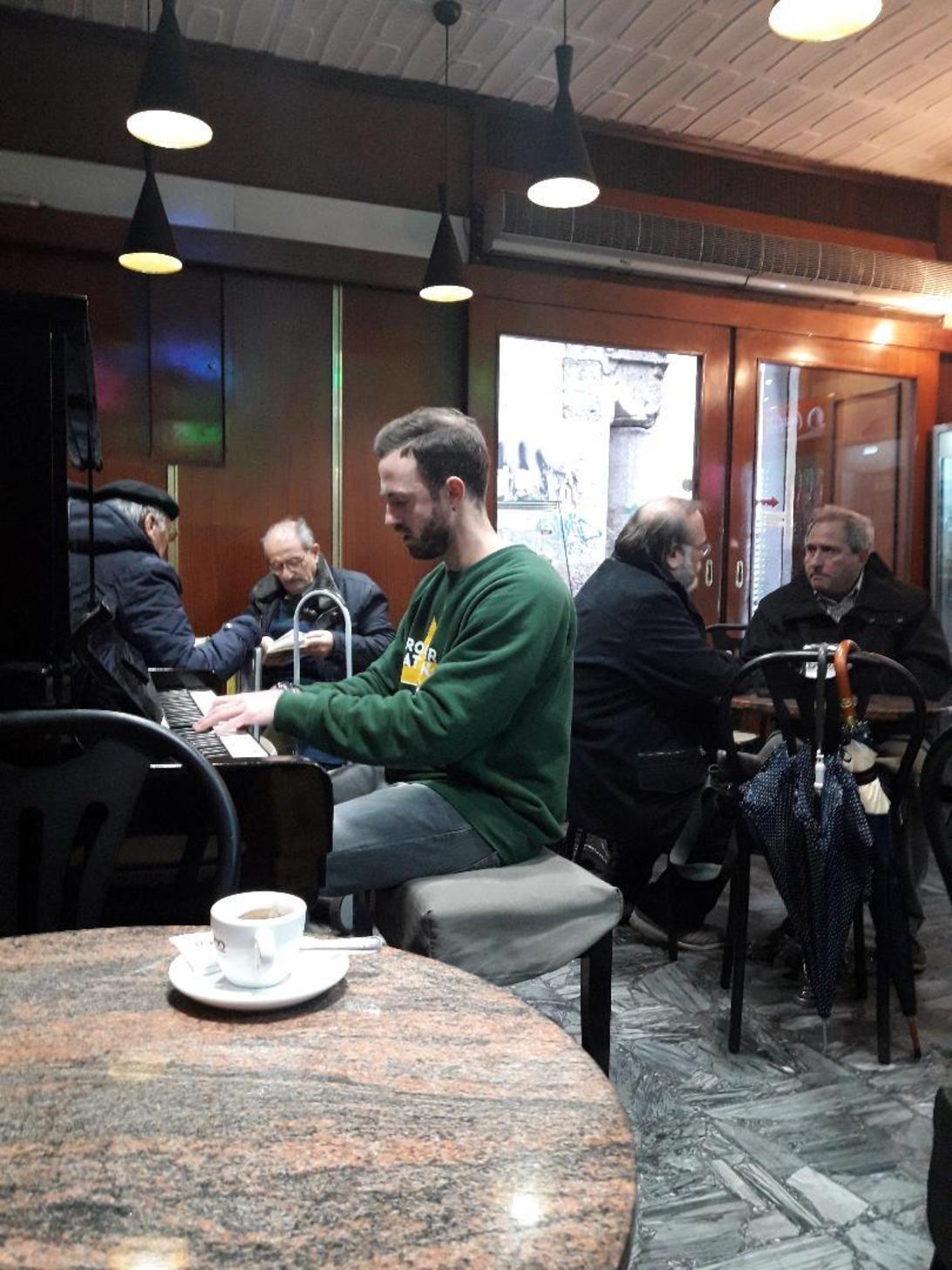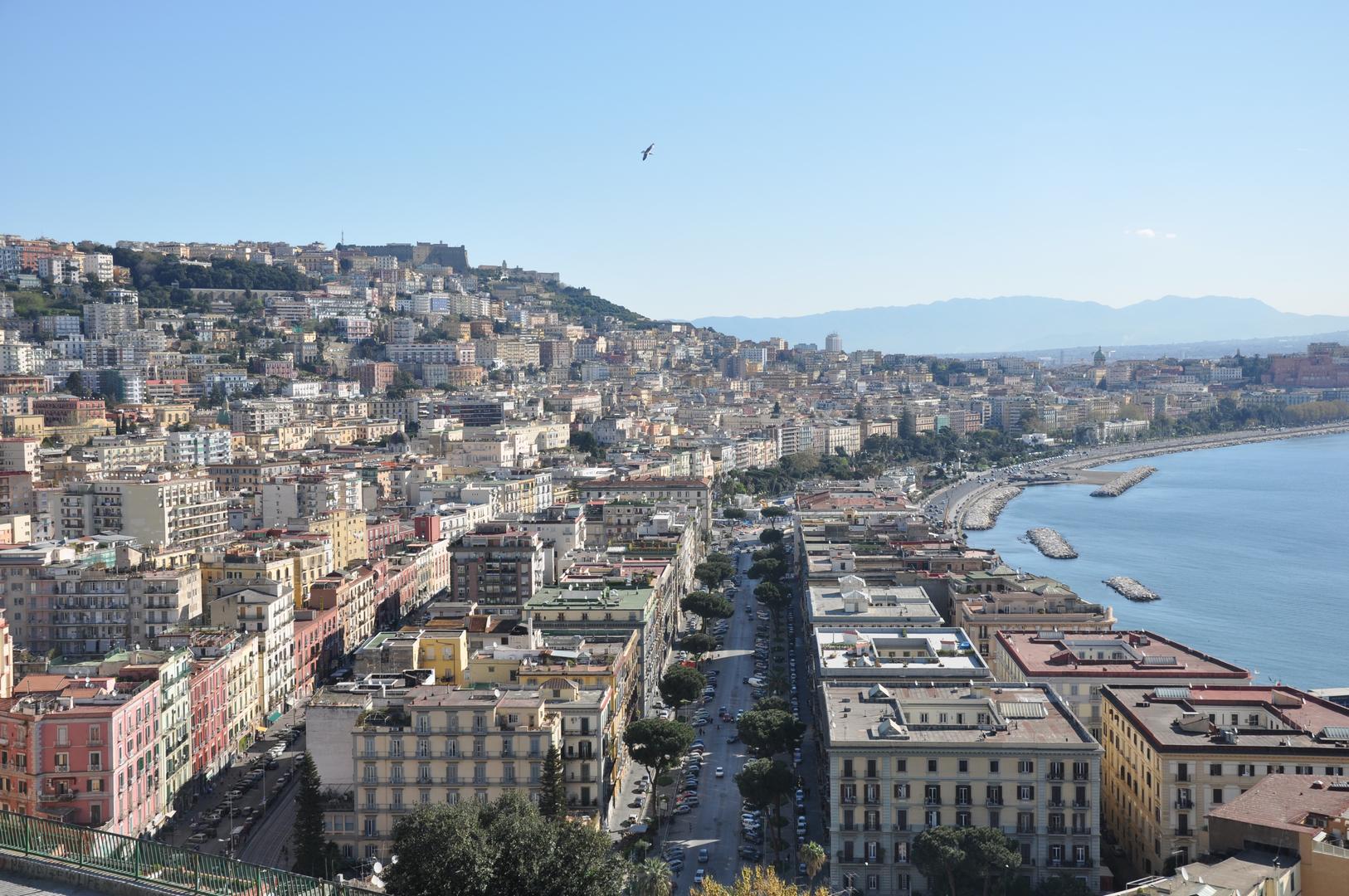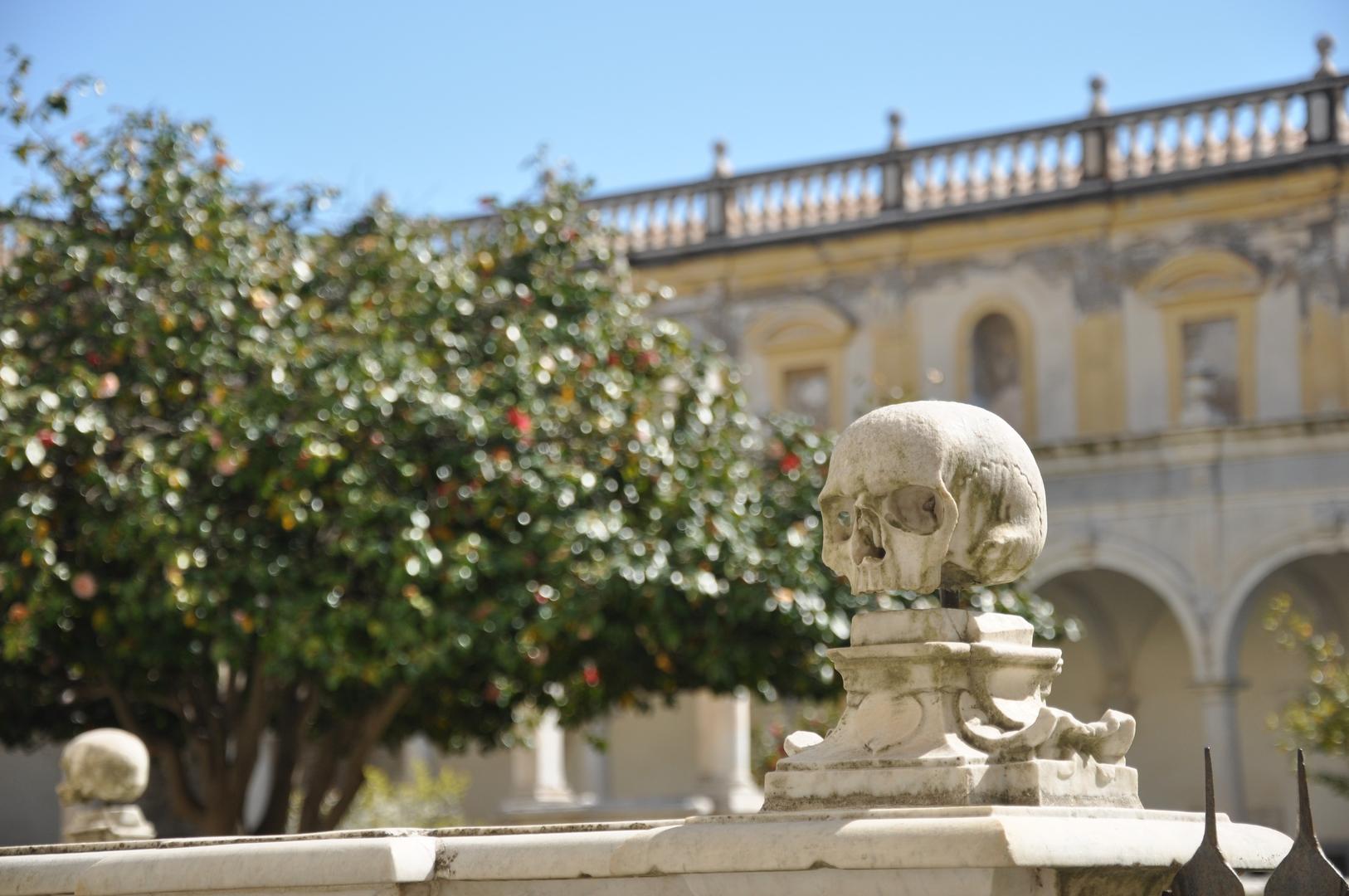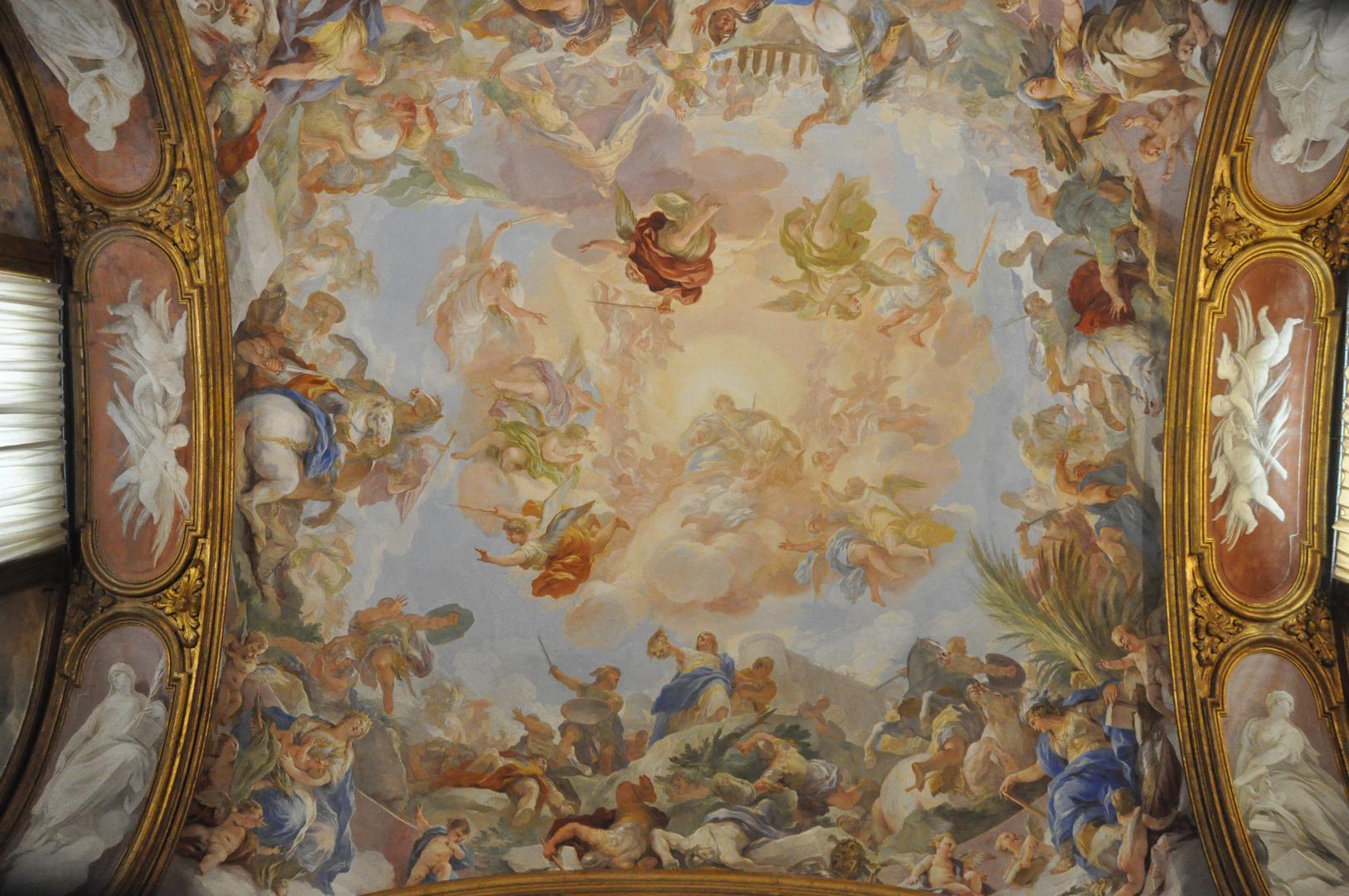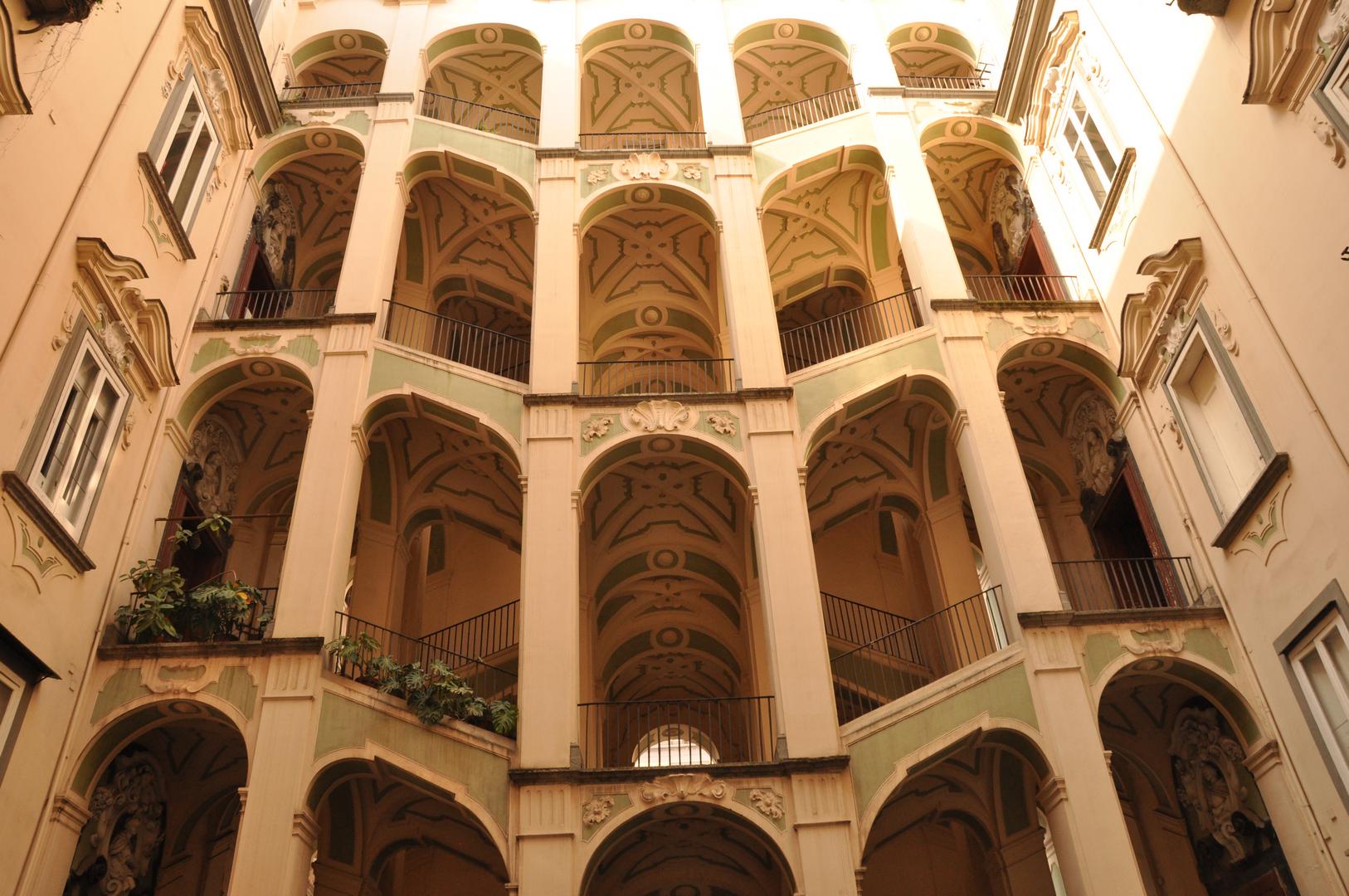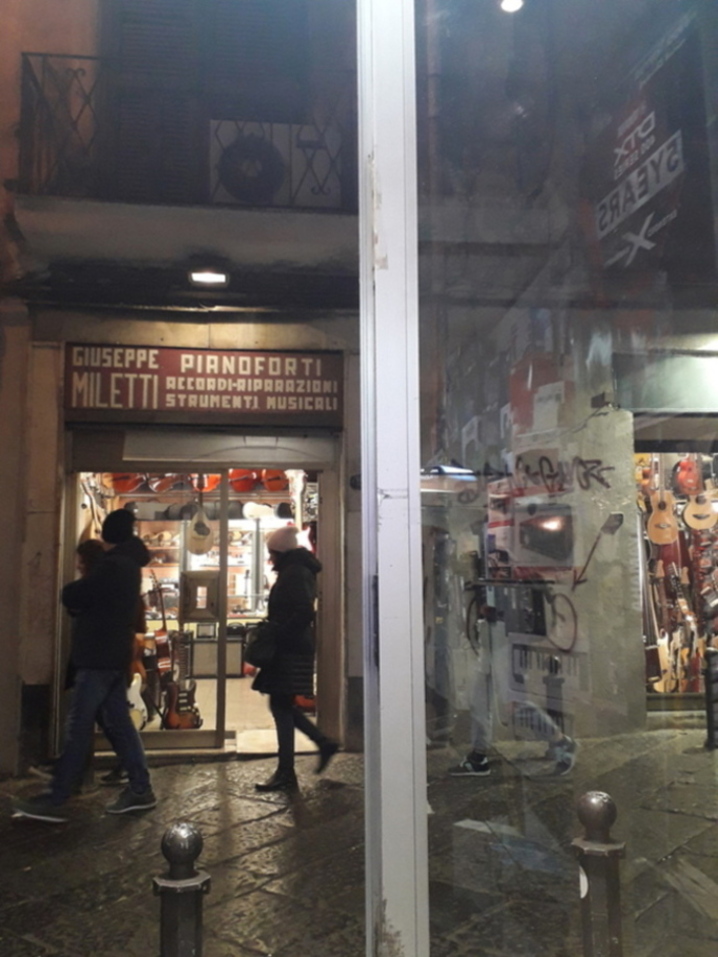
Alice: I remember when I came to Naples eighteen years ago. It was a dark and rainy January and I would walk the historical centre, making friends with the people I’d meet at the shops and bars I spent time in to keep warm. One of the friends I made was working in a CD store on via Sebastiano I had stumbled upon because I was too shy to visit the stores, although I was fascinated by their instruments, especially their mandolins. He introduced me to local musicians like Pino Daniele, Nuova Compagnia di Canto Popolare, Almamegretta and 99 Posse. Along the street named after the once-present San Sebastiano Monastery and with its proximity to the Music Conservatory which has been visited by Rossini, Alessando Scarlatti, Bellini and Donizetti (among others), it is still the home to the biggest concentration of music instruments and equipment in Naples.
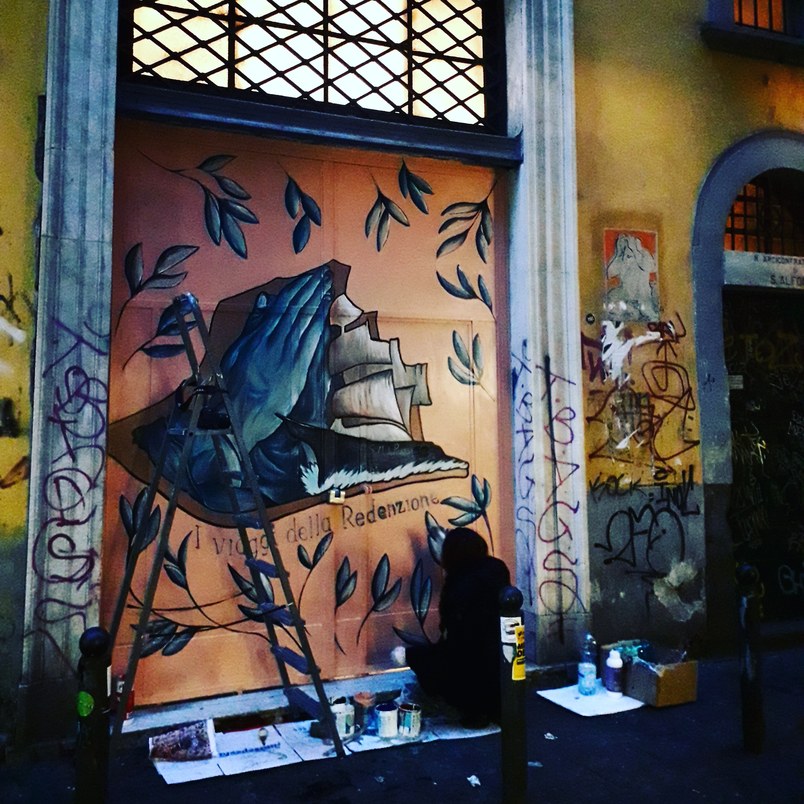
Fiorella: You are right! It is always nice to walk by the Conservatory and hear the musicians and singers practising.
Neapolitans are never tired of visiting this fabulous place.
The Royal Conservatory of San Sebastiano was established in 1807 by King Giuseppe Bonaparte. In 1826 it was named Royal Conservatory of Music of San Pietro a Majella. It originated by fusing together three conservatories founded in the 16th century in the churches of Santa Maria di Loreto, Sant’Onofrio in Capuana and Pietà dei Turchini. The aim of the three institutions was to rescue children from the streets of Naples by housing them and educating them through music.
The conservatory and the adjacent church are part of the 14th century monastery of San Pietro a Majella, built at the end of the 13th century and dedicated to Pietro Angeleri, who became Pope as Celestine V in 1294.
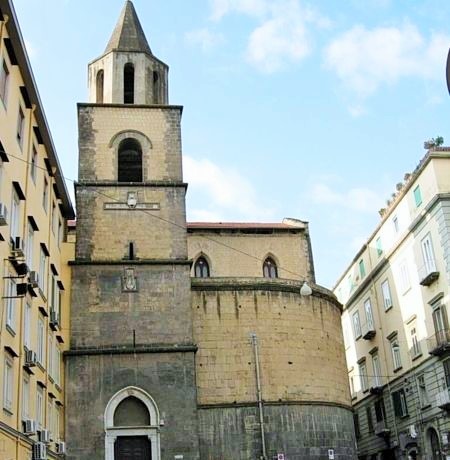
The church is also a must-see! The transept is decorated with valuable frescoes dating from the 14th century, baroque marble inlays and a cycle of paintings by Mattia Preti, amongst the others. The fabulous 17 th century cloister with palm and banana trees and a monument to Beethoven by Francesco Jerace, leads to a second cloister and to the Conservatory.
The Conservatory library houses important manuscripts of the numerous composers who lived and worked in Naples.
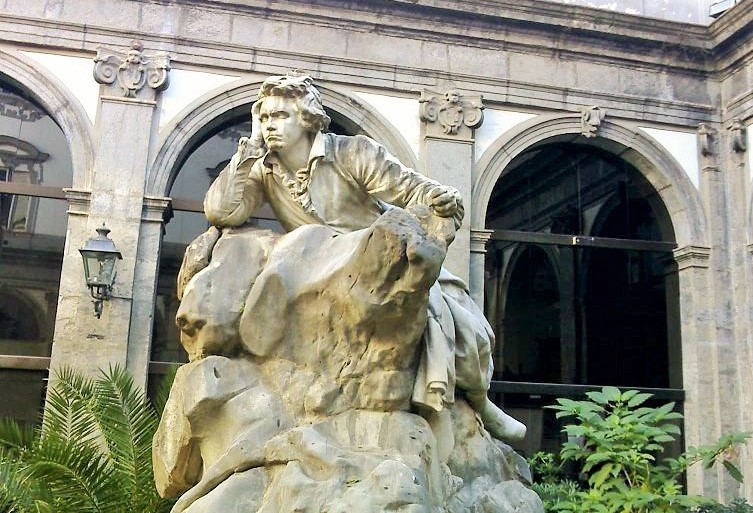
Alice: Also Neapolitan-by-adoption like me love to walk down the narrow, tree-lined street and hear notes from guitars, violins and mandolins waft in and out of the doors of the stores. Music lovers will truly appreciate this corner of Neapolitan history. Don’t be shy like I was initially!We visited Giuseppe Miletti store as well as others the other day to buy a speaker and a mixer for upcoming concerts. Two hours and an impromptu concert later, we walked out smiling and in appreciation of Manuela’s patience for all the models she happily let us try!
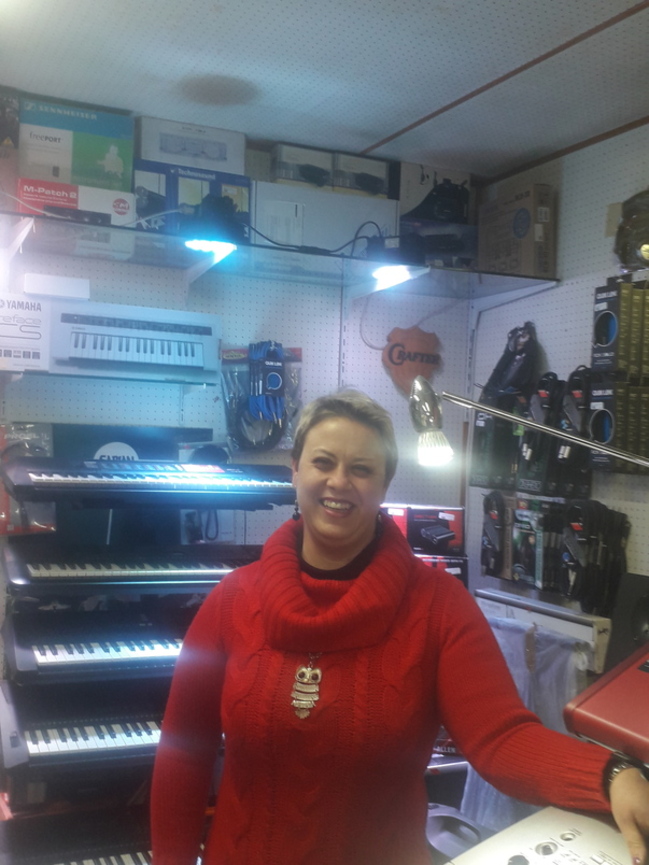
When you leave via San Sebastiano, turn left at Spaccanapoli to check out the artisan street vendors and street musicians performing for the throngs of people walking by. If you’re looking for something to please your sweet tooth, there is Gay Odin which has some of the best chocolate and gelato in town.
In the late 19 th c. Isidoro Odin, a young chocolatier from Alba, come to Naples, one of the most important and populated European capitals. Naples was a melting pot where artists, aristocrats, scholars and food-lovers from all over Europe spent their time in the already colorful and busy streets of the city. The first classy and wonderfully smelling factory was opened in Chiaia, the area where it is still today. Isidoro worked day and night to create delicious new delicacies and surprise the Neapolitan fine palates. Gay Odin chocolate was and is still today considered one of the best in town. All phases of production are handmade, from chocolate roasting to packaging. Packaging is still the original from paper with vintage images to fabulous boxes representing Naples’ vedutas and guaches. One of the reasons why it is in the registry of Italy’s historical places.
Fiorella: Hungry for something more substantial? Try out the pizza at historical Pizzeria Lombardi.
Pizzeria Lombardi a Santa Chiara is a 5 th generation pizzeria, decorated with majolica tiles inspired from the next door cloister of Santa Chiara. The first pizzaiolo in the family started in 1892 in his bare basso (street level home) in vico Limoncello where calzoni with ricotta and maybe cicoli or simply tomato sauce were coming out from a frying pan and sold for few liras to the neighbours. Four generations have made pizzas every day in the historical center.
A coffee is also mandatory in 70s original style Settebello bar, a bohemian spot where whoever desire to play the piano is welcome…be advised though that the owner, Pino, is an expert in classical music. Also, his fabulous nephew is a musician who studies music and plays piano between serving one espresso after another. Intellectuals, street artists, old professors, street vendors and students are all sitting at the tables of this welcoming corner, where table service is not charged.
